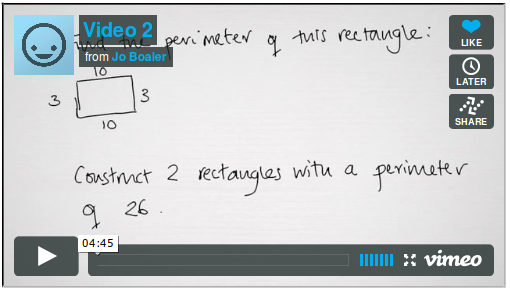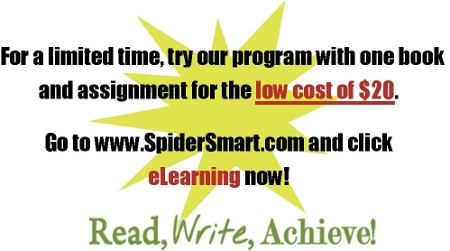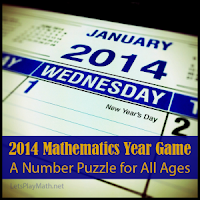
Maria's Math News, Vol. 78, January 2014
Welcome to the new year!
Once again, the newsletter is almost "bursting at the seams", so I hope everyone will find something!
~Maria
AdaptedMind offers:
Unlike textbooks and worksheets, AdaptedMind is customized to your unique child. As your child learns, AdaptedMind learns about your child, and the questions it asks change depending on your child's strengths and weaknesses.
Try AdaptedMind FREE right now!
1. Math Mammoth news
2. Open vs. closed math problems (grades 1-12)
3. 2014 Mathematics Game (grades 3-12)
4. Snowman math! (grades PreK-3)
5. Can you place 1 million on a number line? (grades 4-12)
1. Math Mammoth news
- Homeschool Buyers Co-op has a GROUP BUY for the large Math Mammoth and Make It Real Learning bundle products! The discount will be 20% - 50% depending on the number of participants. The sale runs till January 31, 2014.
- Advance notice... I will be running a sale for all the downloads & CDs at Kagi store in the latter part of January. Stay tuned!
- Math Mammoth Grade 6, revised version is now ready! We're still rolling the updated version into Currclick and Lulu (it should be there within a few days). Printed versions at Rainbow Resource will be in slower. I will be sending an email with download info to people who have bought the complete Light Blue series in the past.
2. From CLOSED math problems (with one answer) to OPEN ones
First, I want you to watch this short video by Jo Boaler. Seriously. Take a few minutes. It's not long, and I think you will be glad you did!
Jo mentioned the simple task of finding the perimeter of a rectangle when its sides are given, and changing that into a problem where students are asked to give two different rectangles with a given perimeter.
That is changing the task from a "closed" format, or a simple performance task, into an "open" format and into a LEARNING/GROWING type of task. It essentially means that now the problem has many possible answers, instead of just one. And it was a very simple change that did it!
(This also helps students develop a growth mindset.)
As you are planning your math lessons, check if some of the tasks you will be giving to your children/students can be CHANGED into open problems.
You can OFTEN take a textbook problem and do this. And, I don't mean you'd need to do this to every problem in the book but do it to SOME so that your children/students can have the opportunity of seeing that math can be ADVENTUROUS — you can be CURIOUS in math class — and it can even be FUN! It's not just about spitting out correct answers to calculation problems!!
Examples of "opening up" math problems
- Calculate 25 × 42. (4th grade)
Change to:
Calculate 25 × 42 in two different ways. Compare your ways with those of your friend.
I just need to break in on myself here, and show you one way to calculate this. 25 is special because it goes into 100 evenly. So, instead of 25 × 42, I calculate 100 × 42 in my head... which is 4,200. Now, the real answer is just 1/4 of that. And... to find 1/4 of any number is SO easy, all you need to do is halve it, and halve it again. So, 1/2 of 4,200 is 2,100, and 1/2 of that is 1,050. So that's the answer, and that is the quickest way I know to find it. But, there are other ways as well! The idea here is NOT to compete with the quickest way to calculate it, but to find several different ways, and let students/children compare the methods.
Read on!

|
www.SpiderSmart.com Real Teachers, Real Results 
703-943-6969
eLearning@spidersmart.com |
3. 2014 Mathematics Game is here!
 Read the complete rules at Let's Play Math.
Read the complete rules at Let's Play Math.Essentially, you're supposed to use each of the digits 2, 0, 1, and 4 and mathematical operations to form the counting numbers from 1 to 100. It's yearly challenge that is fun for all ages!
I'll get you started with a few easy ones:
1 × (4 − 2) + 0 = 2
20 - 14 = 19
41 + 20 = 61
You can also use square root, factorial, decimals, and some other things.
If you can't quite make it to 100... try do all the couting numbers from 1 to 20 or some other smaller goal. (I was able to do them from 1 to 20 in a fairly short time so that much is definitely possible. We'll have to see if complete solutions exist.
This game is also 'live' at Math Forum where you can submit a complete solution, and possibly get it published.
4. Snowman math!
Ready for some snowman math? I checked around on the web and found some neat activities for your little ones, including a puzzle you can do online!=> Snowman math
5. Can you place 1 million on a number line?
Denise wrote something interesting relating to very LARGE NUMBERS, sort of a misconception that we all seem to have.She asked students to mark 1 million on a number line that went from $20 to $1 billion. Here's the number line. Can you do it?

Give it an honest try!
Then go read how her students fared and see the right answer... you might be surprised!
She said, "Our intuitive number sense seems to work like a semi-logarithmic scale, with the small numbers evenly spaced and the bigger numbers crowded together at the end."
Feel free to forward this issue to a friend/colleague! Subscribe here.
Till next time,
Maria Miller